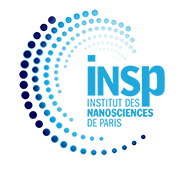Genetic algorithm driven optimization of a guided mode resonator coupled to an infrared nanocrystal film
Résumé
Nanocrystal (NC)-based devices suffer from a trade-off between absorption, pushing for thicker films, and charge conduction that is only efficient over a few NC sizes. Therefore, the design of detectors based on NCs strongly benefits from the introduction of optical resonators that engineer the light–matter coupling. Traditionally, the design of such a cavity relies on analytic scaling rules. However, the design becomes far more complex when multiple resonances are targeted, requiring alternative design strategies. In this study, we explore how infrared nanocrystals can be coupled to a guided mode resonator to achieve a broadband enhancement of absorption. A genetic algorithm is used to systematically investigate how geometric factors can be tuned to increase the absorption × bandwidth product. In comparison to the pristine film, a significant increase in absorption was demonstrated across the targeted spectral range (1–2.5 μm). The detector based on the design metasurface exhibited high detectivity (2 × 1010 Jones @ 200 K) and fast time response (18 ns).

